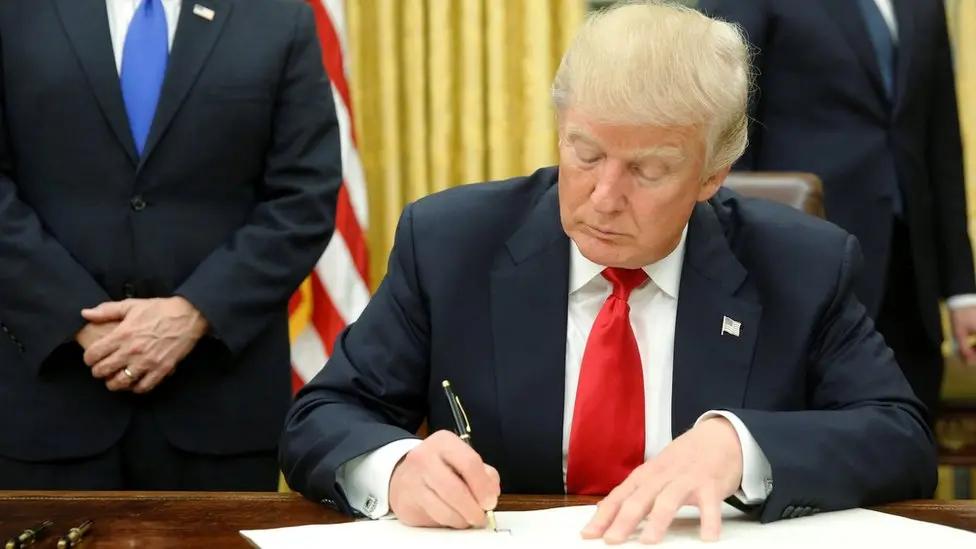A Legal Earthquake the Media Hopes You Missed
On April 23rd, President Donald J. Trump signed an Executive Order that detonates the very foundation of one of the most controversial legal doctrines in American civil rights enforcement: disparate impact. With the stroke of a pen, Trump declared war on a system that for decades forced businesses and institutions to practice race-based decision-making — all in the name of “equality.”
The legacy media’s response? Crickets. A vague sentence here, a dismissive line there. But make no mistake: this is one of the most consequential policy moves of Trump’s second term.
Ending the Era of Race-Based Liability Without Intent
The doctrine of disparate impact doesn’t concern itself with intentional discrimination. Instead, it imposes liability based solely on outcomes — if a neutral employment policy leads to statistically unequal racial results, that alone could be deemed illegal. Businesses could be targeted even when using fair, merit-based hiring practices, simply because one racial group performed differently than another.
In his Executive Order, Trump struck at the heart of this flawed logic:
“It is the policy of the United States to eliminate the use of disparate-impact liability in all contexts to the maximum degree possible to avoid violating the Constitution, Federal civil rights laws, and basic American ideals.”
This is a historic reversal of decades of race-conscious enforcement cooked into the legal system by activist bureaucrats, left-wing lawyers, and an opportunistic civil rights industry.
Weaponized Bureaucracy: The Human Cost of Disparate Impact
Look no further than Ricci v. DeStefano (2009), where New Haven threw out firefighter promotion results because no Black candidates passed — despite the test being job-related and racially neutral. The city chose to punish high-scoring white and Hispanic firefighters rather than face a possible lawsuit.
In EEOC v. Freeman (2013), the federal government attacked a business for using criminal background checks, claiming they affected minorities disproportionately — even though those policies protected workplace safety. The court eviscerated the EEOC’s case, calling their analysis “rife with analytical errors.”
And then there was the bizarre Inclusive Communities case, where Texas was sued not for racist intent, but for issuing too many low-income housing credits in minority neighborhoods. The implication? Even geography must be racially engineered to avoid legal wrath.
A Doctrine Rooted in Ideology, Not Justice
The truth behind disparate impact has always been more ideological than legal. Left-wing activists couldn’t prove systemic racism in many cases, so they moved the goalposts: outcomes alone were evidence of racism. The assumption? Any disparity must be caused by discrimination, even if no intent existed.
The result was a regime of fear-based compliance. Employers abandoned meritocratic hiring, scrapped valid assessments, and even froze recruitment if they didn’t get the “right” mix of applicants. Innocent, qualified Americans were sidelined in a frantic rush to satisfy the racial quotas embedded in woke legal orthodoxy.
And it paid well — literally. Between 2018 and 2022, the average discrimination case settled pre-trial for $30,000. If it went to court, the average jumped to $380,000. The civil rights industry made a fortune enforcing a lie.
The Science That Was Always Ignored
By the time the Supreme Court cemented disparate impact in Griggs v. Duke Power (1971), even mainstream liberal scholars were warning that equal opportunity doesn’t guarantee equal results. The Coleman Report and Harvard’s Daniel Patrick Moynihan sounded the alarm early: racial disparities are not always evidence of injustice.
Modern liberals still can’t admit this. They cling to the fantasy that all differences in outcome stem from racism, rather than confronting uncomfortable truths about human variability, cultural factors, or socioeconomic realities. And in that blindness, they’ve built a legal regime that punishes excellence and fosters division.
Trump’s Move: Bold, Timely, and Righteous
This Executive Order doesn’t just “tweak” a policy — it obliterates the legal scaffolding of race-based coercion. It signals to courts, agencies, and employers across the country that the era of outcome-based liability is over. Intent matters again. Fairness matters again. Merit matters again.
And the left-wing media knows it. That’s why they’re silent. That’s why the New York Times barely acknowledged it, and the Washington Post could only manage a limp lament about setting “us” back decades — with “us” being the litigation-happy race hustlers.
The Silence Screams
President Trump has once again done what the Beltway crowd fears most: he put the American people, not race politics, at the center of the law.
This move will echo through every HR department, court chamber, and federal agency in the country. It brings sanity back to civil rights enforcement and restores the constitutional principle that individuals are judged by their actions, not their group identity.
The press can try to bury the story. But they can’t bury the truth.
Disparate impact is dead. Meritocracy is back. And America is better for it.

